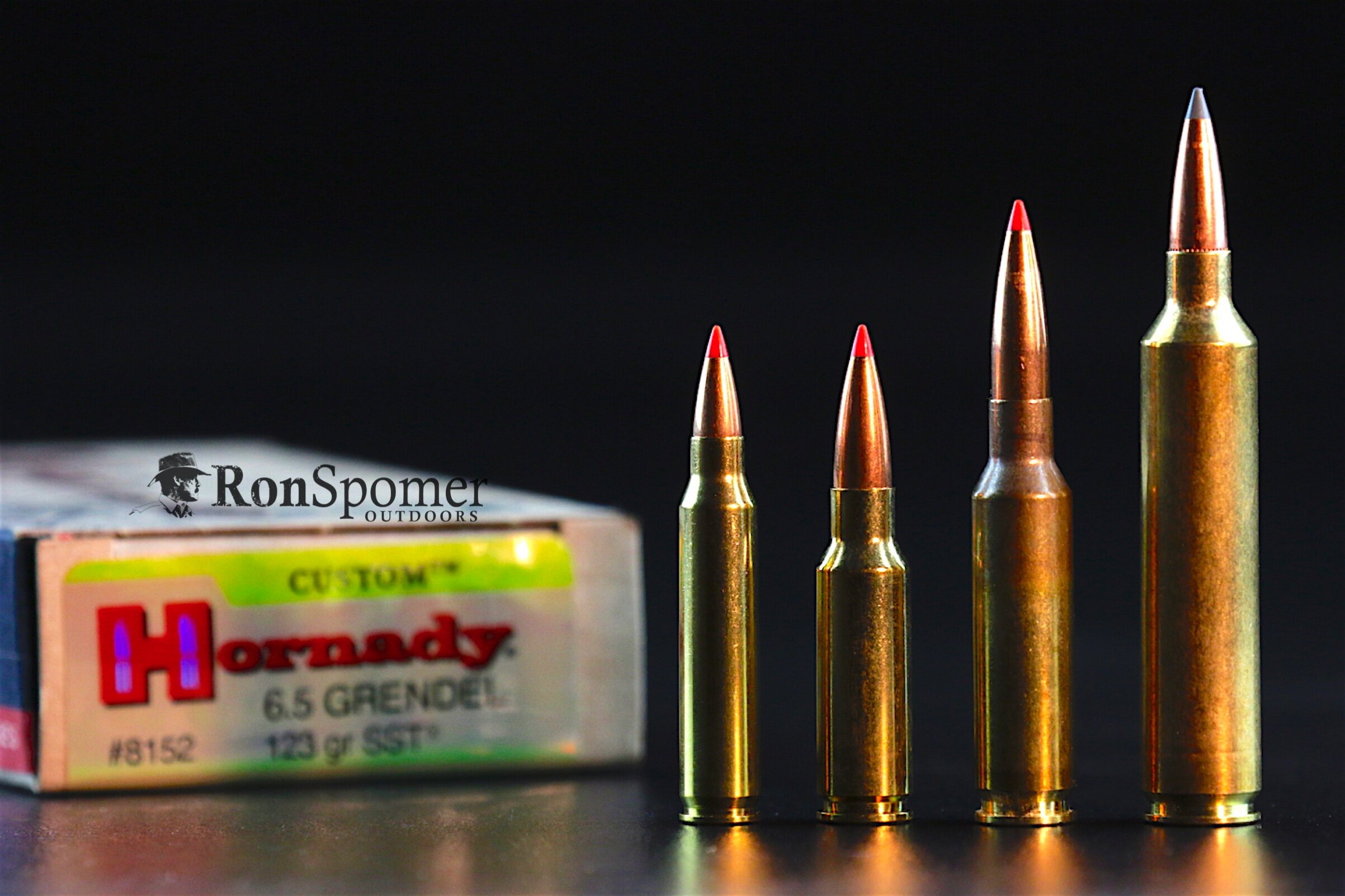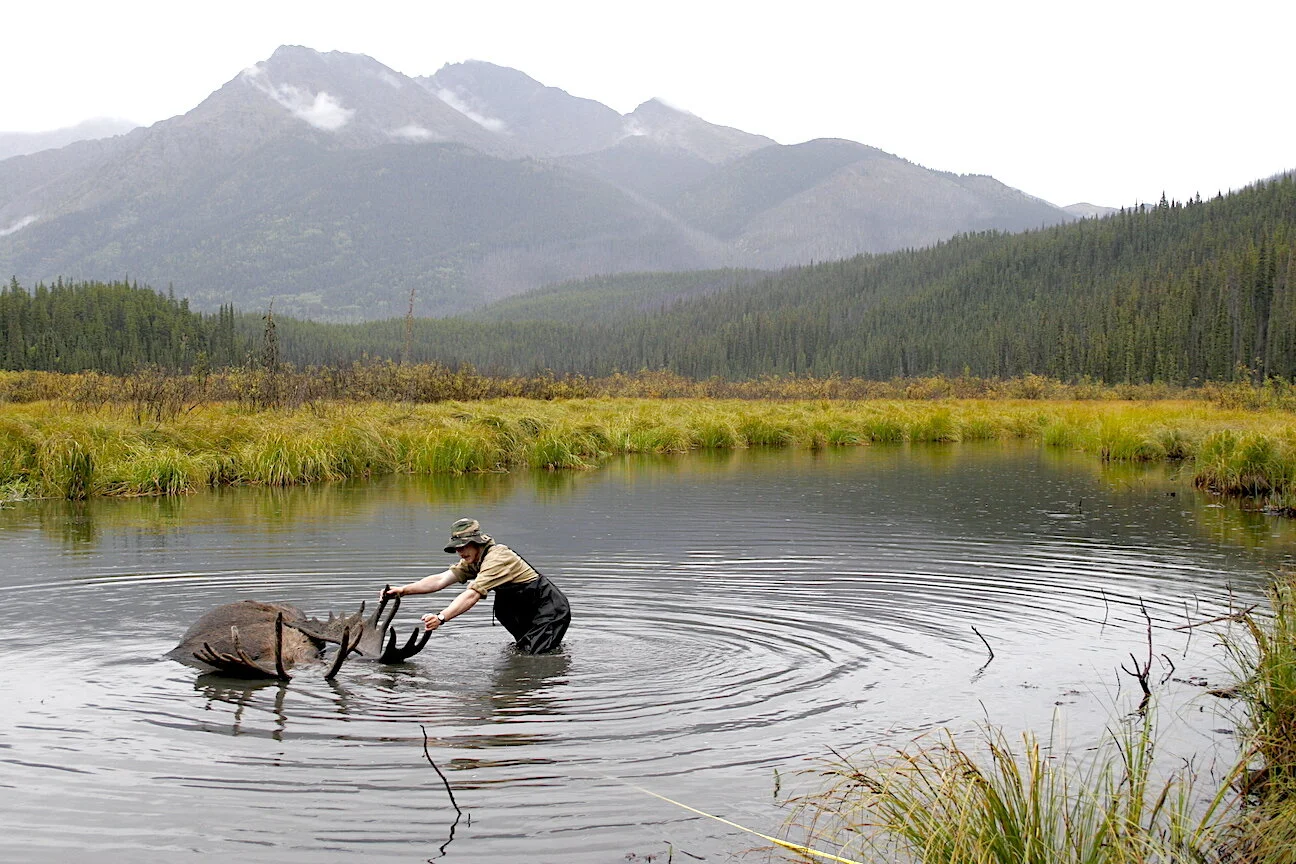6.5 Grendel Deer Hunting Surprise
The 6.5mm (264-caliber) revolution is well underway, so let’s meet the baby of the bunch, the 6.5 Grendel.
Last summer I had a chance to work with a prototype Howa 6.5 Grendel Mini Action rifle designed specifically to optimize this diminutive 6.5mm cartridge in a bolt-action. I discovered a slick, quick-handling rifle and a pixie pipsqueak round that packs a punch. A surprising punch.
Howa's short-stroke Mini Action in 6.5 Grendel could be the perfect deer rifle for recoil sensitive hunters.
Before we answer the burning question, “why build a super short 6.5mm cartridge?” let’s review some raw data:
6.5 Grendel Statistics
Case length: 1.520” (6.5 Creedmoor is 1.920")
Overall Cartridge Length:2.26” (same as 223 Remington.)
Head Diameter: .441”
Base Body Diameter: .439”
ShoulderAngle: 30-degrees
Rifling Twist Rate: 1:8 or 1:9
Velocities through 24-inch barrel:
100-grain bullet: 2,745 fps
120-grain bullet: 2,520 fps
130-grain bullet: 2,400 fps
140-grain bullets intrude too deeply into powder space to be recommend.
Depending on bullet weight and powder type, this little case burns between 25- and 30-grains of powder. Compare that to the 39- to 48-grains consumed in a typical 6.5 Creedmoor case and the 90 grains in a voluminous 26 Nosler, one of the fastest 6.5s on the market. Pushing the same bullets, 6.5 Grendel velocities average about 500 fps slower than 6.5 Creedmoor speeds. This again raises the question why make a 6.5 Grendel in the first place?
A Little Grendel History
The 123-gr. A-Max was engineered to optimize performance in the 6.5 Grendel.
There are a couple of answers. For one thing, the Grendel was concocted in 2002 and made official in 2003. Hornady didn’t unleash its impressively efficient and popular Creedmoor (which seems to be taking over the 6.5mm world) until 2008. The Creedmoor is a highly efficient, short-action cartridge specifically designed for match competition. The Grendel was designed as a battle cartridge. It's purpose was to beat 5.56 NATO/223 Remington ballistic and terminal performance in AR-15 rifles.
Aha. Now it’s starting to make sense. The magazine length of the AR places overall length restrictions on cartridges, forcing designers to maximize performance in a given OAL of 2.260”, the maximum OAL of the 223 Rem. The Grendel does this by using the basic “fat case” configuration of that famous accuracy champ from the 1970s, the 6mm PPC. This stubby round was itself created by modifying the WWII Russian 7.62x39, the round spit out by the infamous AK47 rifle. (Yup, we hacked the Russians.)
Standing right of the 223 Rem. and left of the 6.5 Creedmoor and massive 26 Nosler, the 6.5 Grendel demonstrates how it brings improved downrange ballistic and terminal performance to AR-15-length magazine rifles.
So the Grendel is short enough to fit AR-15 rifles, but it cranks out more horsepower than the 223 Rem. by virtue of its slightly larger powder capacity and heavier, higher B.C. bullets. As the following ballistic tables show, the Grendel provides considerably more punch and less wind deflection at all ranges, despite dropping a bit more than the 223.
The 6.5 Grendel Goes Ballistic
Here's the 223 Rem. Nosler 69-gr. Custom Competition ballistic table:
5.56 NATO 69-gr. Custom Comp.
Here's the 6.5 Grendel, Hornady 123-gr. ELD-Match ballistic table:
6.5 Grendel 123-gr. ELD Match
Note the energy differences. At 600 yards the 6.5 Grendel carries more than double the horsepower of the 223. When the need might be to punch through heavy clothing, perhaps a thin wall or vehicle windshield, this can make a significant contribution. The 12" less wind deflection makes it much easier to hit in variable winds at 600 yards, too. These numbers indicate how the significantly higher B.C. of this .264" bullet enables it to overcome the faster muzzle velocity of the .223 bullet.
What's the 6.5 Grendel Good For?
So, aside from battle, what is this super-short cartridge good for? It is effective for precision target shooting, varmint shooting, predator hunting and, within reason, deer/pronghorn hunting with virtually no recoil. These days not many of us think of 123-grain bullets at 2,500 fps ideal deer medicine. Many of us do, however, believe that 1,000 f00t-pounds is the acceptable standard for terminal energy. With the 123-grain Hornady ELD-Match detailed above, the Grendel hauls over 1,000 f-p at 300 yards. That's about twice as far as most whitetail hunters shoot these days and it's roughly 350 foot-pounds more energy than the beloved 30-30 Winchester retains at 300 yards.
Hey shorty! Despite it's 223 Rem. length, the stubby 6.5 Grendel provides significant punch in super short action rifles.
All of this makes sense within the limitations of an AR-15 platform, but why mess with it in a bolt-action? Well, there's novelty, a super fast bolt stroke, a shorter overall length rifle, quieter muzzle blast, efficient use of powder and minimal recoil. That last benefit may be the best of all. The free recoil generated by a Grendel throwing a 123-grain bullet 2,350 fps from a 7-pound rifle is just 7.5 foot-pounds. Compare that to the 17 foot-pounds kicked up by a 308 Winchester spitting a 150-grain bullet 2,800 fps and you begin to realize the wonderful advantage a round like the Grendel has for shooters who cannot tolerate heavy recoil. Factor in the Grendel's reasonable trajectory curve and downrange energies of the 123-grain load listed above and you're looking at a cartridge more than capable of taking deer out to 300 yards. If you or anyone you know needs a medium-game hunting rifle that's easy to carry and doesn't hurt to shoot, a super-short action like the Howa Mini in 6.5 Grendel is a great option.
Conclusion
The 6.5 Grendel is a compact, efficient little cartridge tailored specifically for AR-15 platform rifles, but its mild recoil and surprisingly efficient ballistic performance make it ideal for recoil sensitive shooters needing a hunting rifle for deer-sized game.
From the 17 Mach 2 to the 505 Gibbs. Ron Spomer has shot, photographed and hunted with most of them. He enjoys sharing what's he's learned with his readers.


















